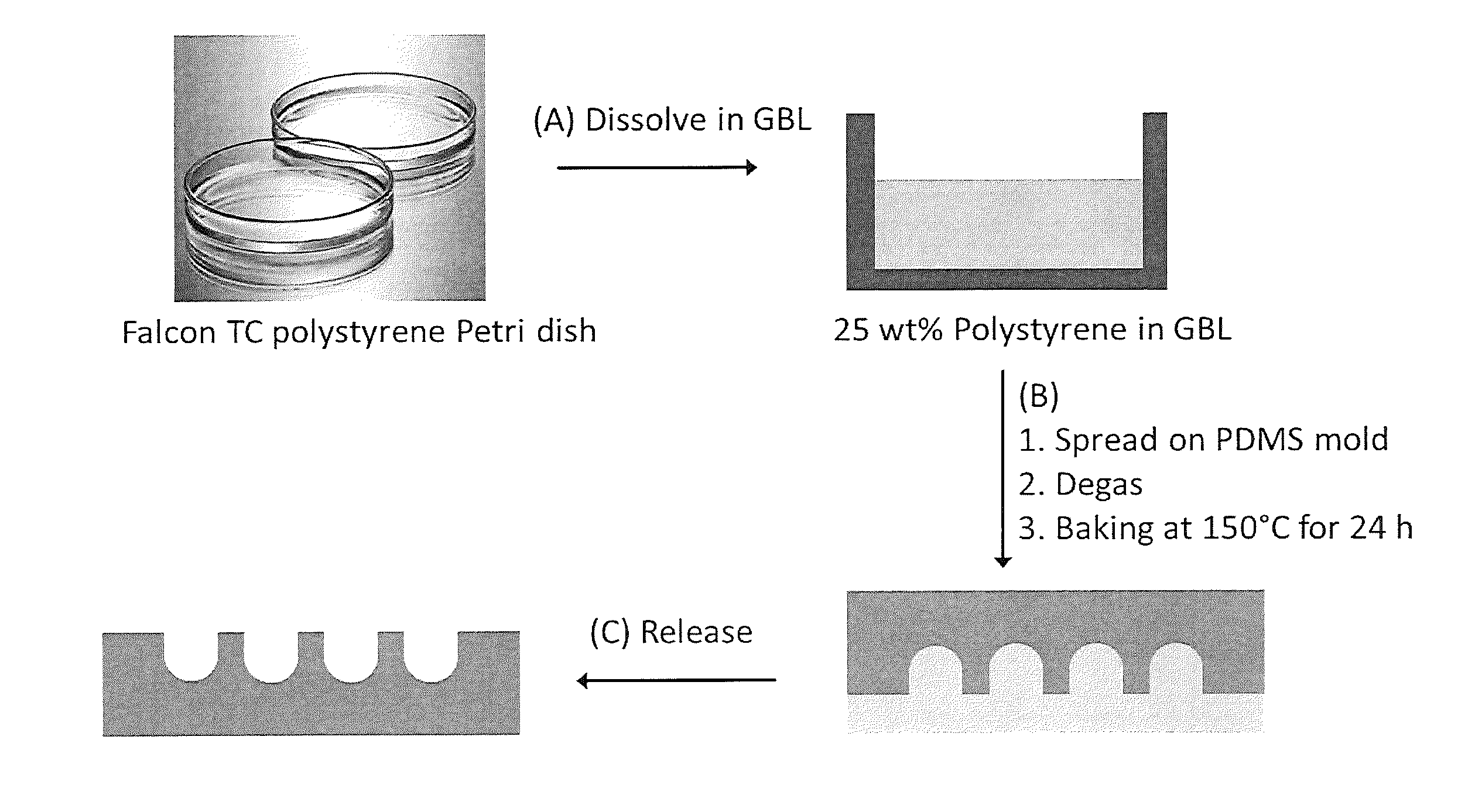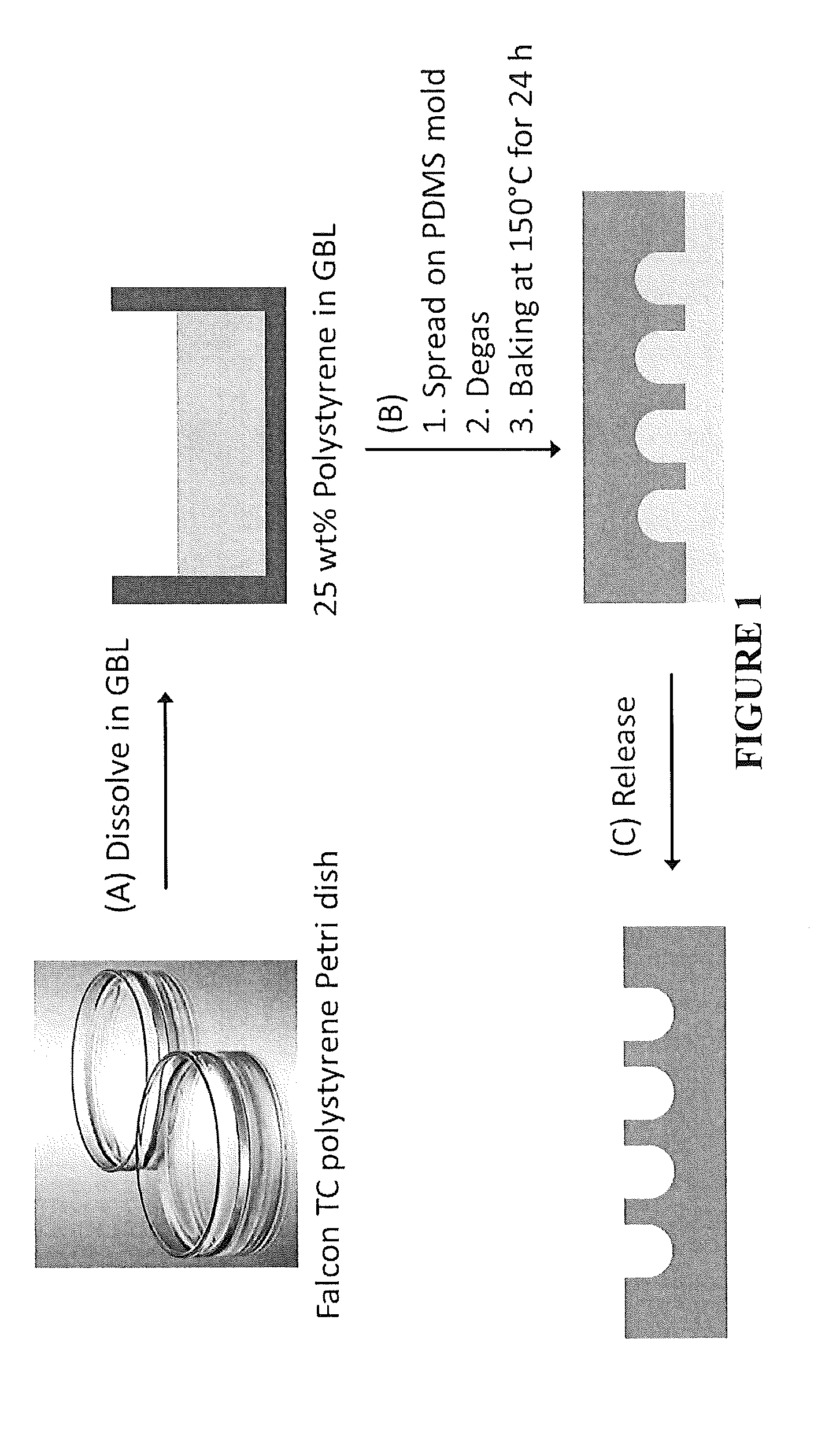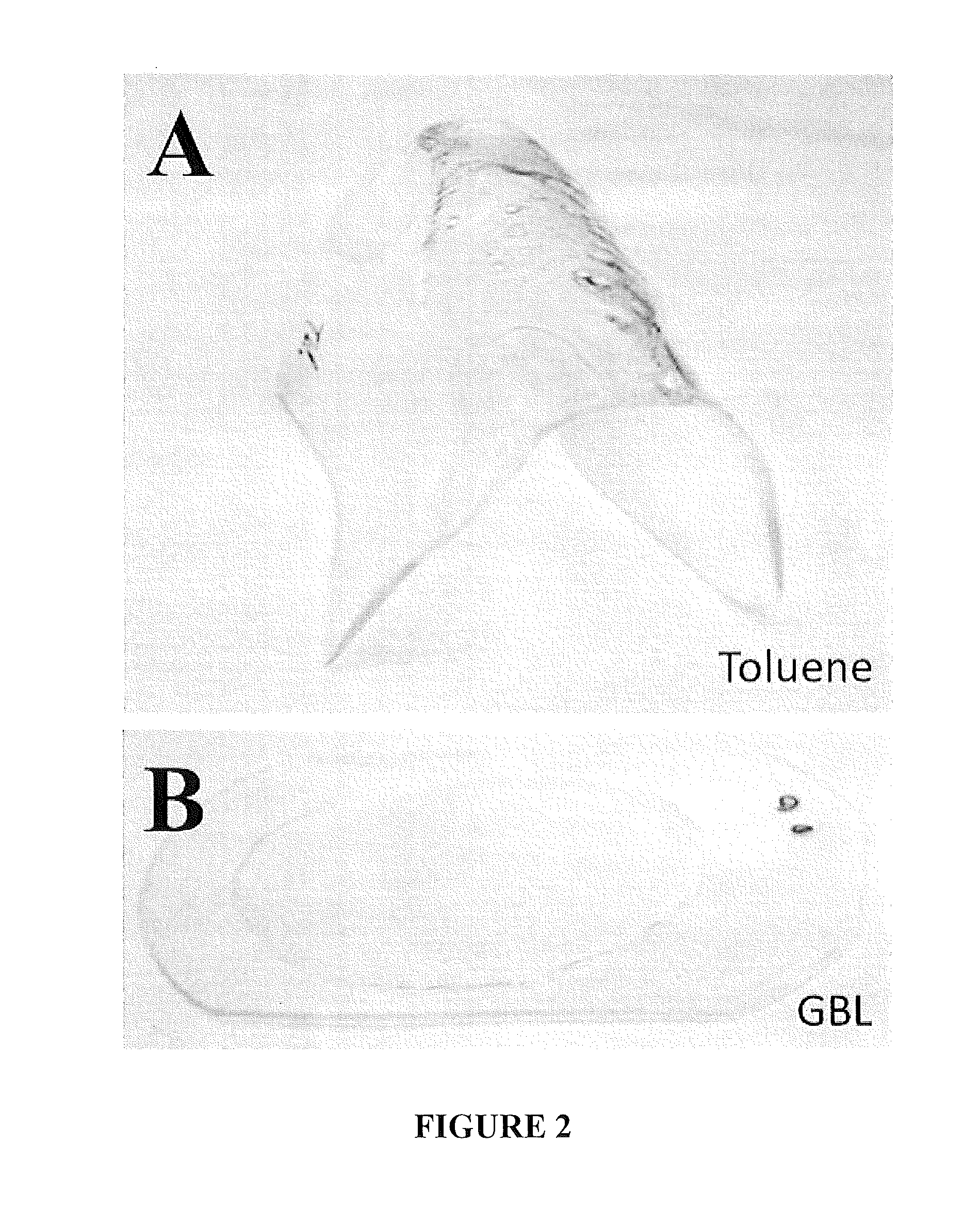Micromolding of polystyrene by soft lithography
a technology of polystyrene and micromolding, which is applied in the field of methods for carrying out soft lithography, can solve the problems of difficult to achieve other methods, and achieve the effects of high resolution, broad applicability and high fidelity
- Summary
- Abstract
- Description
- Claims
- Application Information
AI Technical Summary
Benefits of technology
Problems solved by technology
Method used
Image
Examples
Embodiment Construction
[0027]“Lactone” as used herein refers to a cyclic ester which can be seen as the condensation product of an alcohol group —OH and a carboxylic acid group —COOH in the same molecule. It is characterized by a closed ring consisting of two or more (e.g., 2, 3 or 4 to 5, 7 or 9) carbon atoms and a single oxygen atom, with a ketone group ═O in one of the carbons adjacent to the other oxygen. The ring may optionally be substituted, for example with hydroxyl and / or C1-C4 alkyl. Example lactones include, but are not limited to, propiolactone, butyrolactone, valerolactone, caprolactone, etc.
[0028]“Aliphatic polyester” polymers are known and described in, for example, U.S. Pat. Nos. 7,994,078; 6,953,622; and 5,976,694, the disclosures of which are incorporated by reference herein in their entirety. Examples include, but are not limited to polyhydroxy butyrate (PHP), polyhydroxy butyrate-co-valerate (PHBV), polycaprolactane, polybutylene succinate, polybutylene succinate-co-adipate, polyglycol...
PUM
| Property | Measurement | Unit |
|---|---|---|
| aspect ratio | aaaaa | aaaaa |
| width | aaaaa | aaaaa |
| depth | aaaaa | aaaaa |
Abstract
Description
Claims
Application Information
 Login to View More
Login to View More - R&D
- Intellectual Property
- Life Sciences
- Materials
- Tech Scout
- Unparalleled Data Quality
- Higher Quality Content
- 60% Fewer Hallucinations
Browse by: Latest US Patents, China's latest patents, Technical Efficacy Thesaurus, Application Domain, Technology Topic, Popular Technical Reports.
© 2025 PatSnap. All rights reserved.Legal|Privacy policy|Modern Slavery Act Transparency Statement|Sitemap|About US| Contact US: help@patsnap.com



